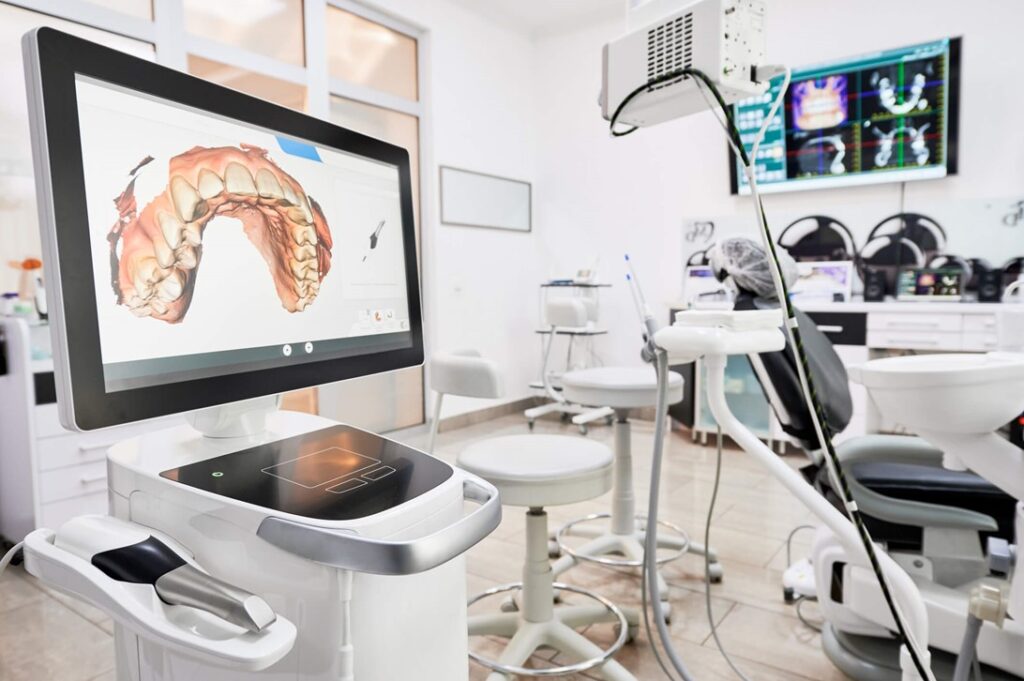The Evolution of Dental Technology in Patient Care
Dentistry is a well-respected medical field that has come a long way in recent history. What once required clunky tools and guesswork has evolved into a high-tech experience that benefits patients throughout every stage of care. Modern dentistry in Scottsdale is now defined by precision, comfort, and customization. Let’s trace the evolution of dental technology advancements to see how far the field has come and what patients can expect from world-class care.
Historical Milestones in Dental Technology
Rudimentary dentistry stretches back thousands of years, but major breakthroughs in technique and technology have emerged in more recent history. These milestones laid the foundation for the sophisticated treatments available in modern practices:
- Foot-powered drills introduced in the late 1700s: The early dental drill, powered by a foot pedal, allowed for more controlled and less traumatic cavity treatment. It marked the beginning of mechanical assistance in dentistry.
- Widespread use of amalgam in the 1830s: Silver amalgam fillings replaced fragile materials like gold foil and beeswax. They became the first long-lasting and widely accepted restorative solution.
- Anesthesia revolutionized patient comfort in the 1840s: The introduction of nitrous oxide, followed by local anesthetics, made pain management possible for the first time.
- The invention of dental X-rays in 1895: With the ability to see beneath the surface, dentists could now diagnose issues like impacted teeth or jawbone infections more accurately.
- Fluoride treatments in the mid-20th century: Community water fluoridation and in-office fluoride applications helped prevent decay on a large scale.
Modern Innovations That Have Shaped Dentistry
Dental care has advanced remarkably quickly over the last 20 years. Advancements in digital dentistry have made diagnostics more accurate and procedures more efficient. Here are the tools and technologies that facilitate a higher level of care:
- 3D imaging: Cone-beam CT scans and digital panoramic X-rays provide complete, high-definition views of the mouth and jaw. These images can precisely diagnose bone density issues, infections, and alignment problems.
- CAD/CAM technology and 3D printing: Using computer-aided design and fabrication, dentists can scan a patient’s tooth, design a crown, and 3D print it in the office for same-day restorations. Other 3D-printable items include custom aligners, surgical guides, dentures, and veneers.
- Digital impressions: Intraoral scanners capture detailed digital models that feed directly into design software, allowing patients to avoid gooey molds and generating higher-quality results.
- Laser dentistry: Lasers can treat gum disease, remove overgrowth, and contour tissue with minimal bleeding or recovery time.
- All-on-4 implants: This revolutionary restoration procedure secures an entire row of teeth using just four strategically placed implants, providing a long-lasting, natural-looking alternative to removable dentures.
- Teledentistry: Virtual consultations allow patients to speak with their dentist from anywhere, making initial evaluations and follow-ups more convenient.
- Artificial intelligence: AI tools review X-rays and imaging for signs of disease, pointing out issues that might be missed by the human eye. This gives patients and dentists another layer of confidence when developing treatment strategies.
What the Future of Dentistry Holds
Modern innovations show no signs of slowing down. Research labs and dental tech companies continue developing tools that promise to refine care even further. Here are some upcoming advancements to look forward to:
- AI-powered predictive analytics: Software tools are being designed to predict future dental issues based on patterns in the patient’s history, lifestyle, and genetics. Preventive care will likely become even more proactive than it is today.
- Robotic assistance in surgical procedures: Dental implants and other complex procedures could soon benefit from robotic tools that guide hand movements with millimeter precision. This technology is expected to reduce the margin for error during highly delicate treatments.
- Adaptive and smart restorations: Future restorations may include materials that adjust to temperature, pressure, or chemical changes inside the mouth. These adaptive solutions could provide longer-lasting protection and comfort.
- Regenerative dental materials: Scientists are experimenting with bioactive materials that promote tissue regeneration. One day, it may be possible to heal a damaged tooth from within, eliminating the need for certain restorations.
- Integrated oral-health monitoring systems: Wearable or embedded sensors are being developed to monitor data like oral pH, glucose levels, and bacteria counts in real time. These tools could alert patients or dentists to problems before symptoms appear.
- Augmented reality in dentist training and patient education: AR technology is already being used in dental schools, but its role in patient education is growing. Visual overlays could help patients better understand proposed procedures and predicted outcomes.
Modern Dentistry in Scottsdale at its Finest
While most dental practices utilize modern technology, they’re not all created equal. S&C Dental Scottsdale embraces the heritage and future of dental technology. Our comprehensive services span routine cleanings, cosmetic enhancements, and full restorative treatments. Patients trust our knowledgeable team for expert care delivered with a personal touch. Contact us today to see how dental technology advancements can upgrade your experience.

